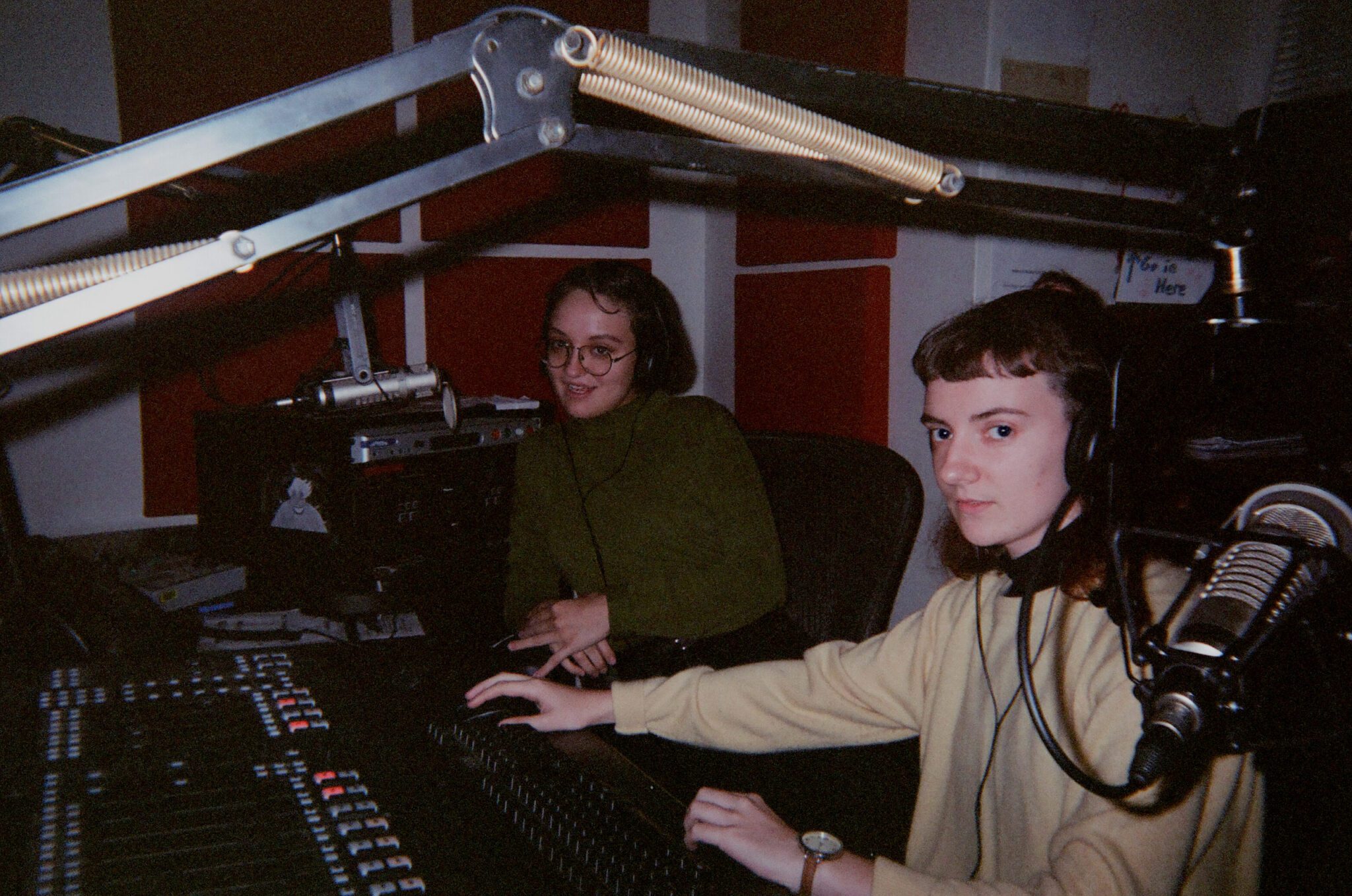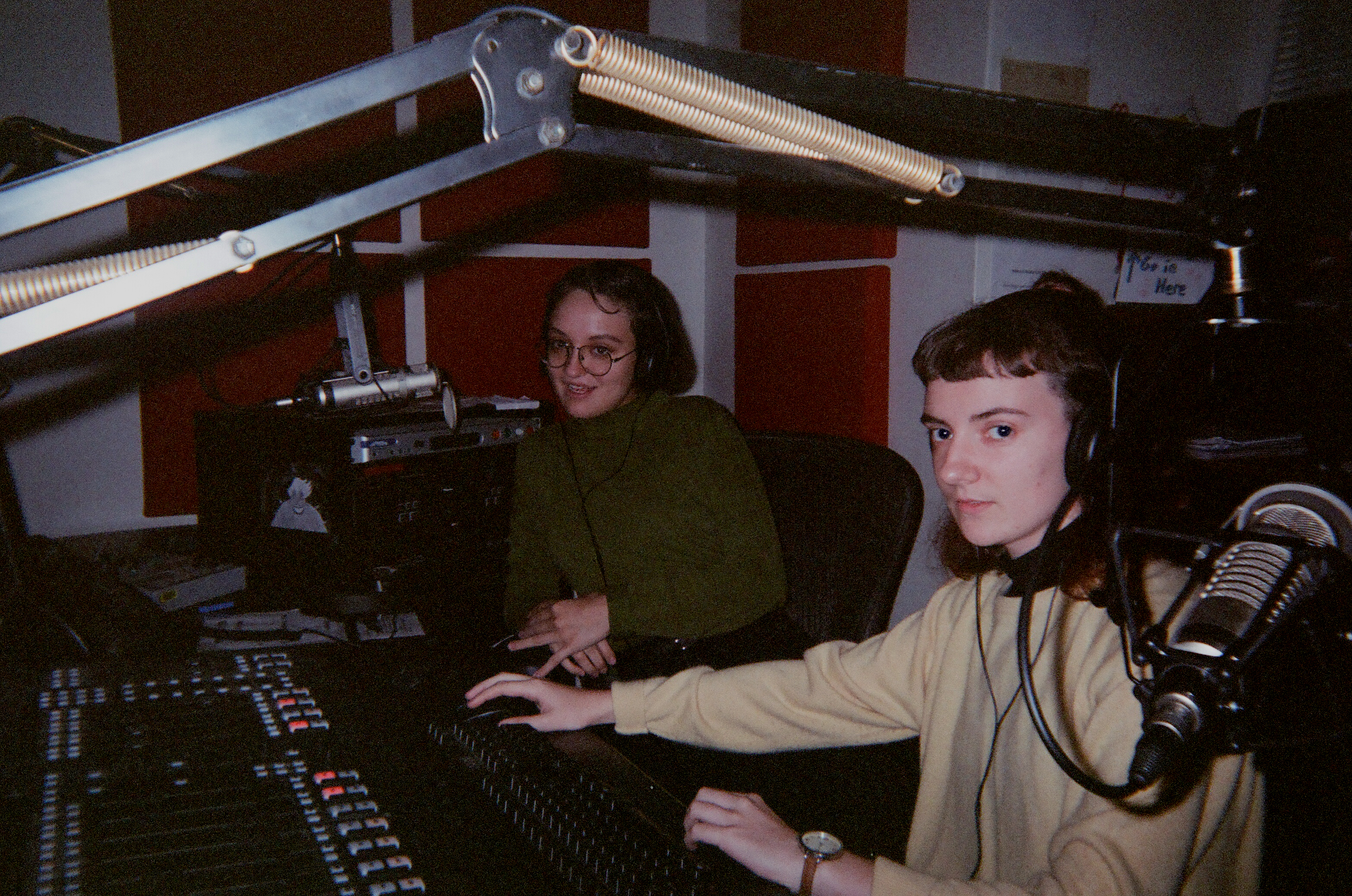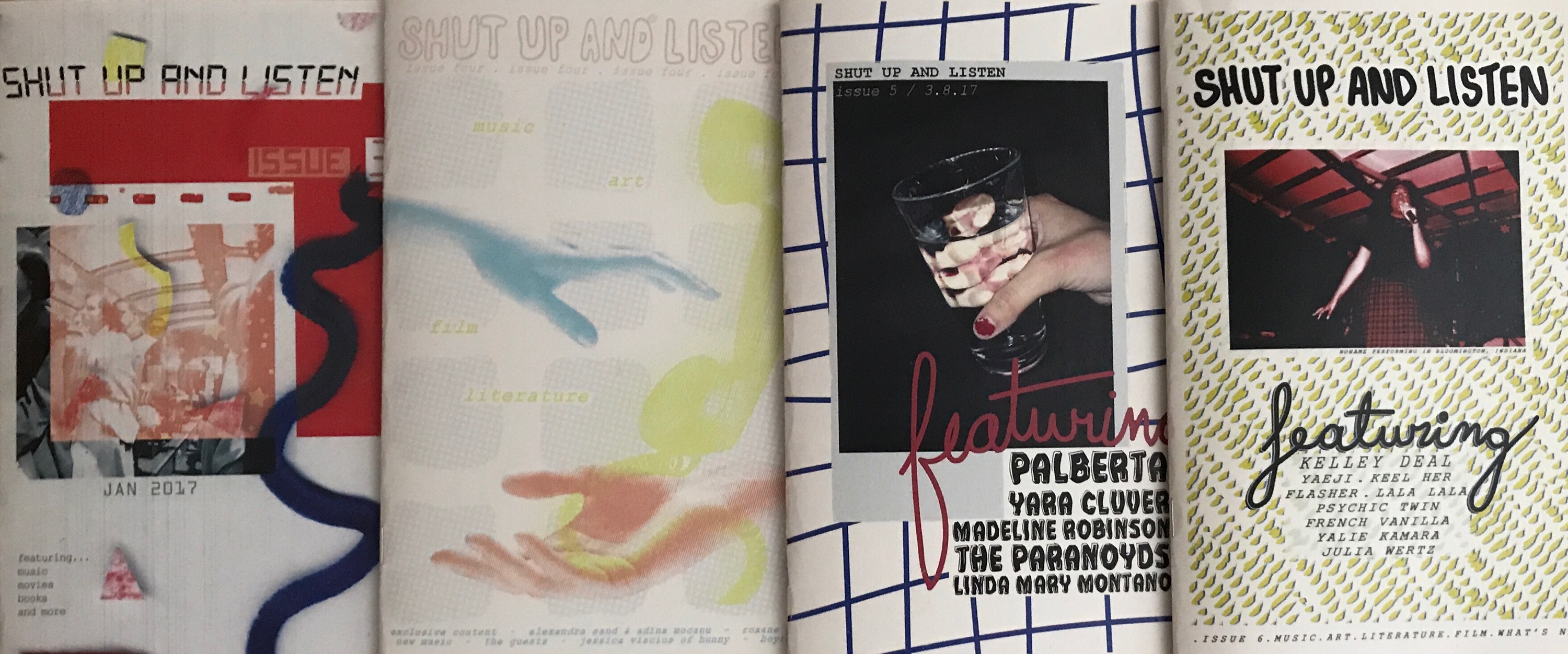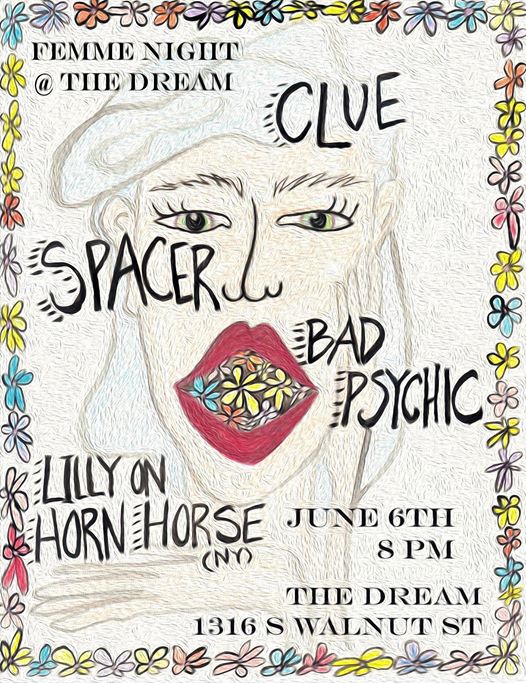PLAYING BLOOMINGTON: Jessie Grubb & Bethany Lumsdaine of Shut Up and Listen

Shut up and Listen is a serial zine based out of Bloomington, Indiana that focuses on the (mostly local) underground music scene. Jessie Grubb and Bethany Lumsdaine are the creative partners and best friends behind the zine and radio show under the same name. Grubb and Lumsdaine have been self publishing and distributing Shut up and Listen almost monthly since October, cobbling together an eclectic mix of reflections on the local scene, interviews with touring and local artists, music recommendations, and event information that have been thoughtfully curated and compellingly written. Each issue of Shut up and Listen features bright and colorful cover designs and artist illustrations that both stand out on their own and solidify a cohesive aesthetic across all six (and growing) issues. Last week, I got the chance to chat with Jessie Grubb and Bethany Lumsdaine. We talked music, the local scene, and the future of Shut up and Listen.
While Shut up and Listen officially began its run in Fall 2016 as Grubb and Lumsdaine’s WIUX radio show, their creative partnership goes back much earlier. The two have been interviewing local musicians since they met in high school, working predominantly with WFHB, the local radio station that runs teen radio hours every Saturday evening from 6pm-10pm, and Rhino’s Youth Center, which operates a youth podcast afterschool program on Thursdays. Since high school, Grubb and Lumsdaine have been involved in multiple creative pursuits. Jessie taught herself design through her participation in yearbook and newspaper in high school and now performs in the local synth-punk band, Clue. Bethany, who made her first zine in high school, was a printmaking major in the Fine Arts program before switching over to Journalism. Because of their like-minded creative proclivities, a partnership naturally followed shortly after meeting each other. They crafted the first time they hung out, a tradition that they have maintained over the years. The two even admitted that it is sometimes difficult to hang out without reverting to discussing their various work-related projects.
Grubb and Lumsdaine started to regularly attend shows together when Lumsdaine began studying at Indiana University and Grubb was finishing up in high school. They attended their first house show together on July 4, 2014 at the Dream (then known as Cram). As Grubb and Lumsdaine reminisced, they revealed some interesting insights about the Bloomington house show scene. According to Lumsdaine, “people really come out to house shows compared to venue shows here, but it can be really unwelcoming if you are not used to it or if you are going alone. It can be really intimidating.” There’s no doubt that walking into a stranger’s house is nerve-wracking, but she offers encouragement, too: “I started going to house shows in my freshman year and I just went alone – I went to every show that I could find out about.”
As Grubb noted, “There’s definitely a closeness because Bloomington’s pretty small and the music scene is even smaller.” Once one gets their bearings in the tight-knit scene, shows are easier to find out about and become more comfortable to attend. Unlike larger scenes, Bloomington house shows tend to advertise their addresses publicly. Shows are also advertised via public Facebook groups such as “The Bloomington House Show Network” and “Let’s Go! Bloomington Punk Shows!”
After getting past any initial awkwardness of navigating the punk scene, Lumsdaine and Grubb admitted that they prefer house shows over venues. “People here are excited to see the music,” Lumsdaine explained. “The biggest difference between the house show scene and a venue is that at a house show no one is talking during the band. It is rude if you are in the basement and talking during the show. That is a thing that I really appreciate – that’s what I go to shows for, the music. The fact that everyone else there is as excited and interested as I am is really nice.” House shows are also available to people of all ages, whereas most of the downtown venues are 21+.
Lumsdaine and Grubb revealed that adapting their radio show into a zine was a natural move. The zine permanently documents their radio show work, which is only temporarily accessible via live listening. While zines had been on their radar for a while, the two didn’t feel as if they had enough of a focused topic to run with it until Shut Up and Listen came along. Both Grubb and Lumsdaine affirmed that Shut up and Listen gave them a path that allowed them to carve out a niche for themselves in the Bloomington music scene. “I feel like i have a lot more purpose at the shows and more of a reason to go talk to people,” Grubb admitted. “It is easier to talk to people because I do this zine.”
When I asked the duo to describe what Shut Up and Listen is all about in their own words, Grubb replied, “Shut Up and Listen is all about giving a voice to underrepresented musicians and artists.” Without missing a beat, Lumsdaine added, “creating a platform where they can be taken seriously.” According to them, these underrepresented groups include women, minority groups and gender nonconforming people. Underrepresented also refers to underground. Lumsdaine and Grubb make a point to feature rising artists who have typically gotten very little exposure and media coverage. Their goal is to find these artists and use the platform that Shut Up and Listen provides to elevate and support them.
[fusion_builder_container hundred_percent=”yes” overflow=”visible”][fusion_builder_row][fusion_builder_column type=”1_1″ background_position=”left top” background_color=”” border_size=”” border_color=”” border_style=”solid” spacing=”yes” background_image=”” background_repeat=”no-repeat” padding=”” margin_top=”0px” margin_bottom=”0px” class=”” id=”” animation_type=”” animation_speed=”0.3″ animation_direction=”left” hide_on_mobile=”no” center_content=”no” min_height=”none”]

Both have strong reasons for supporting local and underrepresented artists. Through their work, they are hoping to create a more inclusive and diverse local music scene. As Lumsdaine explains, “I think it’s important to see people like yourself on stage. It’s important to book shows that have a variety of people on them, not just one kind. I know I’ve been really inspired by seeing a woman do something that I only ever dreamed of because it seems a lot more possible. I remember the first time I saw a female-fronted hardcore band, and I was like, this is amazing, I could do that too… A ton of the women we interviewed, they started because they saw another woman in a band, and they wanted to be like that, or they realized that they could do it then. Representation shows people that it’s possible.”
Within a larger system that encourages women to tear each other down, Grubb and Lumsdaine have been working together to create a collaborative project that elevates them both. Together, the two of them research, plan, interview, attend shows, and write. They divvy up the writing and trade off on illustrations and cover art, but they make a point to avoid crediting each piece individually. Grubb explained, “There’s only two of us. It’s by one of us, it doesn’t really matter.” Lumsdaine agreed. “If somebody is like, ‘I love this article,’ it doesn’t matter. It’s a whole thing.” If my interview with Jessie Grubb and Bethany Lumsdaine has taught me one thing, it is that beautiful things can happen when your best friend is also your creative partner.
After taking a short break to pursue other creative opportunities (writing pieces for Tom Tom Magazine, playing shows, and collaborating with local artist Amy O on her upcoming zine, Yoko Oh Yes, Lumsdaine and Grubb will be back with a summer issue of Shut Up and Listen this August.[/fusion_builder_column][/fusion_builder_row][/fusion_builder_container]




